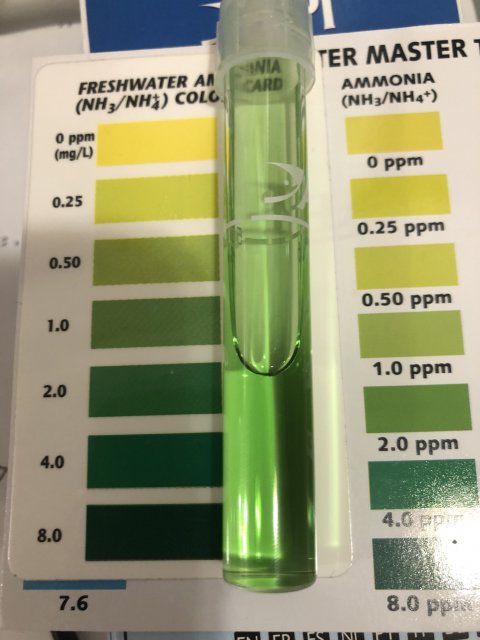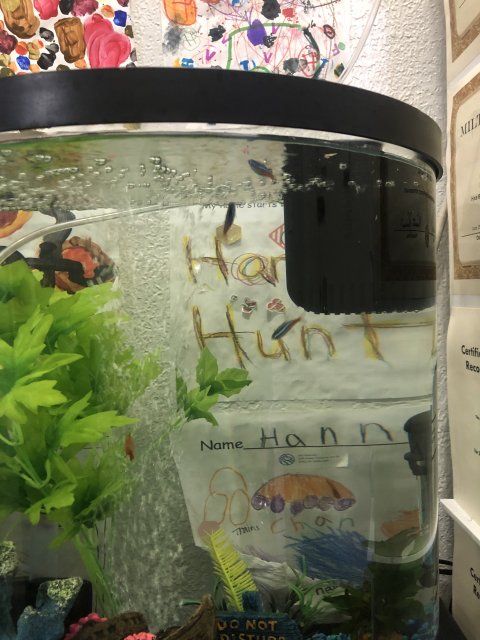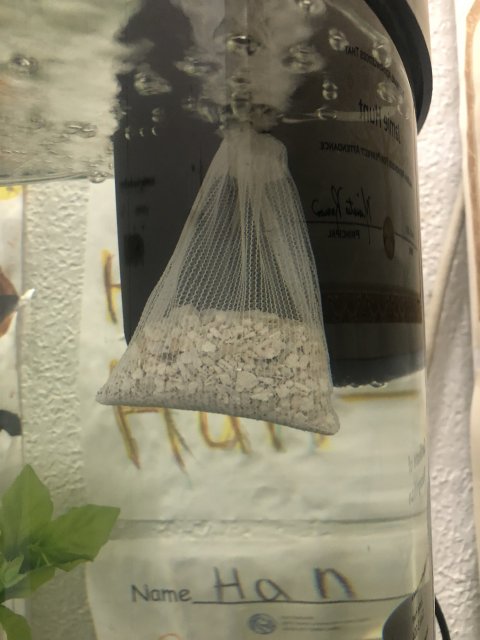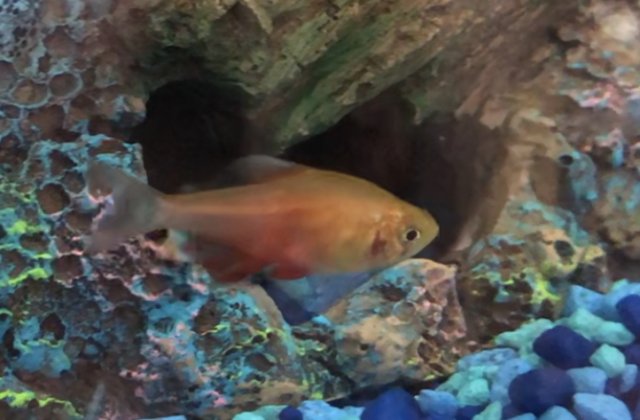I would not worry about 2 ppm for a day or two.
I am thinking that whatever is in Quickstart is handling nitrite. I am also thinking that the reason is even yhough it is thw wrong bacteria for the long term, it will work in the short term. What will happen is the API bacteria will die back and be replaced with the ones which will be in the tank longer term. I am also thinking that the ammonia ones are somewhat similar. The bacteria which wind up in SW v.s FW are different to some extent. There is a greater variety of ammonia oxidizing bacterial strains in FW than SW tanks. So the ammonia bacteria from API is not as usefull as what is in Dr. Tim's or SafeStart Plus. So these work faster.
Then there are plants. When they use the ammonium in TA, the do not create any nitrite and therefore you get no nitrate either. Some plants will use nitrate but most prefer ammonium if it is available.
But the biggest clue as to what you should do is still the behavior of your fish. One of the best signs that a fish is sick or infected with something is that it tends to hide. And when all the fish in a tank are having the same issue, you will know. The problem for us as fish keepers isn't in being able to spot when things are not right, it is with the frequent difficulty we have in figuring out the cause.
You have an advantage here because you are cycling. Therefore if the fish start acting differently, it is a pretty good chance it is cycling related. And the solution to pollution is dilution. Or in simpler terms, water changes.
Also, if you can get crushed coral in a mesh bag (the foot end of an old stocking would work) you can hang it in the tank near the bubbles coming up from an airstone or in the tank near to or exactly where the filter return comes out. You just need water movement through.over it.
Finally, slow as they are, the nitrifying bacteria reproduce in hours. Under optimal conditions the ammonia ones will do so in 8 hours and the nitrite ones in about 11. On the other hand you fish should be producing a fairly constant level of ammonia. You can help hold ammonia down by feeding less. Most fish can go days without eating. This does not apply for new born ones/fry. So you can feed them every other day and it will not harm them.
Finally, if you hit 2 ppm or even a bit higher. You do not have to drop the level drastically. The more you can leave in the water the faster the cycle will proceed. A 1/2 change leaves you with 1 ppm, a 1/3 change leaves you with 1.33 ppm and a 1/4 change results in 1.5 ppm. What causes the bacteria to reproduce is when there is more ammonia/nitrite than they can use.
I am thinking that whatever is in Quickstart is handling nitrite. I am also thinking that the reason is even yhough it is thw wrong bacteria for the long term, it will work in the short term. What will happen is the API bacteria will die back and be replaced with the ones which will be in the tank longer term. I am also thinking that the ammonia ones are somewhat similar. The bacteria which wind up in SW v.s FW are different to some extent. There is a greater variety of ammonia oxidizing bacterial strains in FW than SW tanks. So the ammonia bacteria from API is not as usefull as what is in Dr. Tim's or SafeStart Plus. So these work faster.
Then there are plants. When they use the ammonium in TA, the do not create any nitrite and therefore you get no nitrate either. Some plants will use nitrate but most prefer ammonium if it is available.
But the biggest clue as to what you should do is still the behavior of your fish. One of the best signs that a fish is sick or infected with something is that it tends to hide. And when all the fish in a tank are having the same issue, you will know. The problem for us as fish keepers isn't in being able to spot when things are not right, it is with the frequent difficulty we have in figuring out the cause.
You have an advantage here because you are cycling. Therefore if the fish start acting differently, it is a pretty good chance it is cycling related. And the solution to pollution is dilution. Or in simpler terms, water changes.
Also, if you can get crushed coral in a mesh bag (the foot end of an old stocking would work) you can hang it in the tank near the bubbles coming up from an airstone or in the tank near to or exactly where the filter return comes out. You just need water movement through.over it.
Finally, slow as they are, the nitrifying bacteria reproduce in hours. Under optimal conditions the ammonia ones will do so in 8 hours and the nitrite ones in about 11. On the other hand you fish should be producing a fairly constant level of ammonia. You can help hold ammonia down by feeding less. Most fish can go days without eating. This does not apply for new born ones/fry. So you can feed them every other day and it will not harm them.
Finally, if you hit 2 ppm or even a bit higher. You do not have to drop the level drastically. The more you can leave in the water the faster the cycle will proceed. A 1/2 change leaves you with 1 ppm, a 1/3 change leaves you with 1.33 ppm and a 1/4 change results in 1.5 ppm. What causes the bacteria to reproduce is when there is more ammonia/nitrite than they can use.






